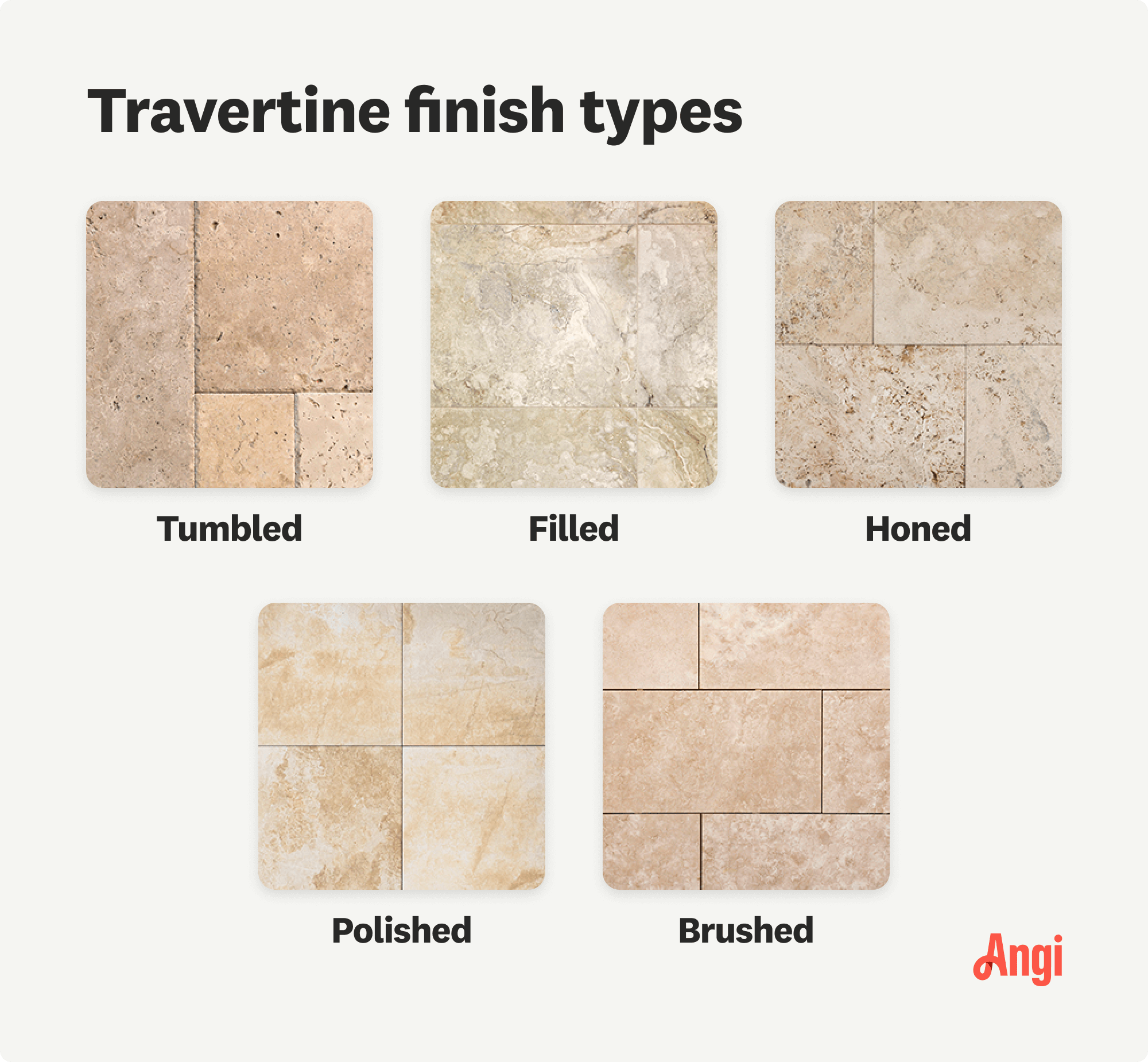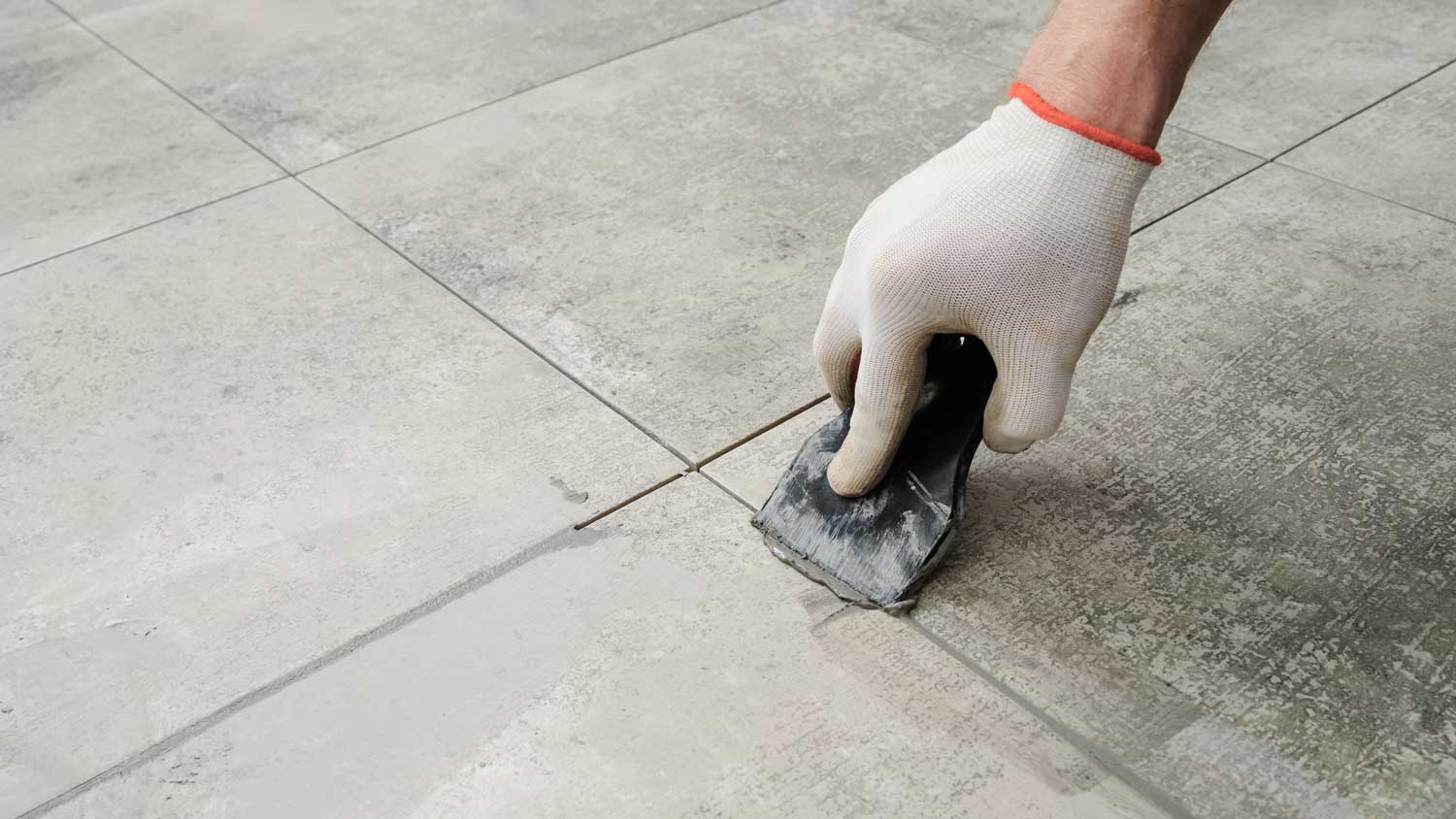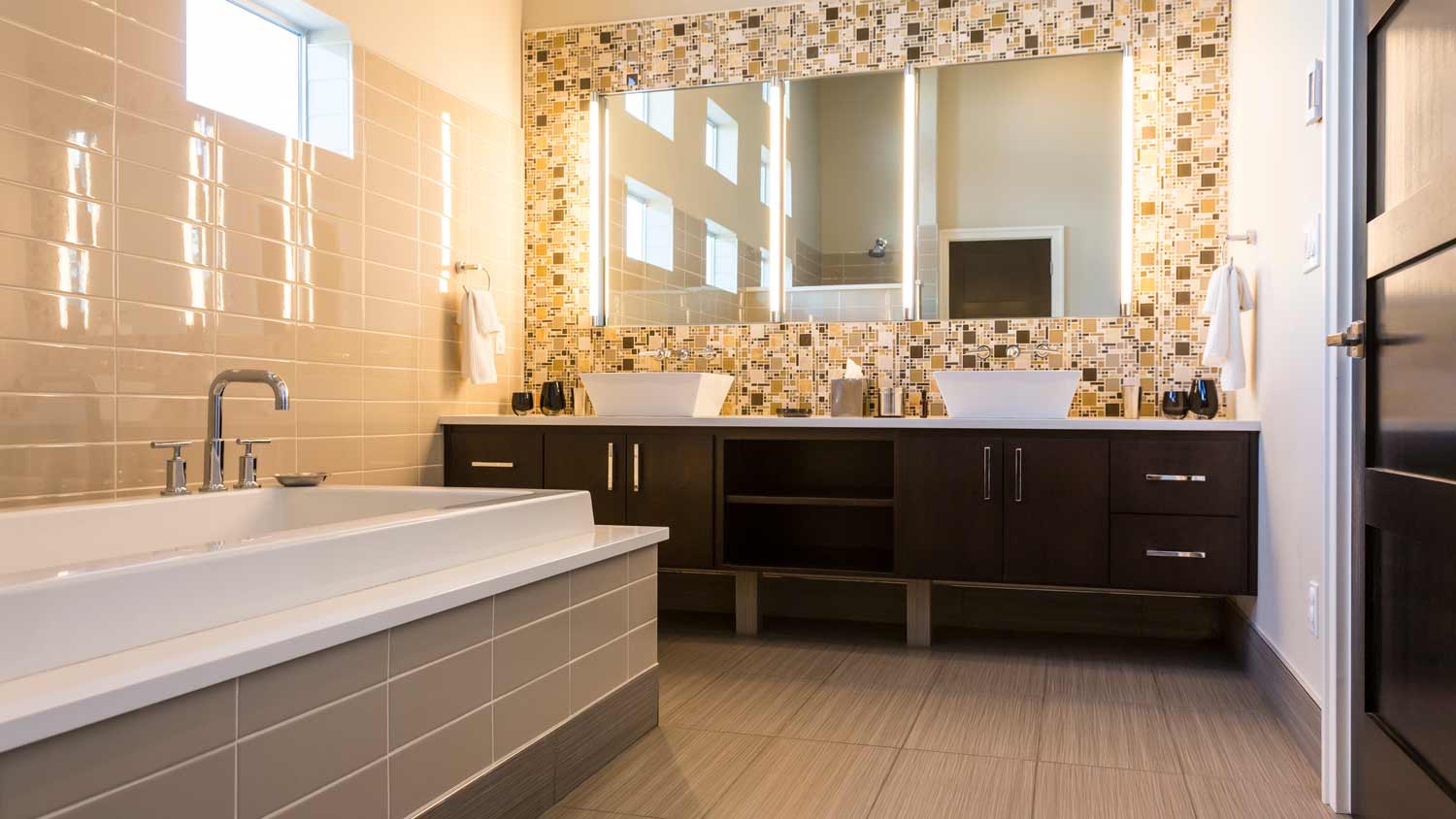
The cost to install porcelain tile depends on materials, size, and whether you DIY or hire a pro. This guide will help you choose the perfect porcelain tile for your home and budget.
Ceramic tile service costs depend on your project and location. Check with a local pro for your specific job.
You’ll pay $5 to $47 per square foot to install travertine tile.
Premium tiles have the most consistent color and thickness and are the highest quality, so they cost the most (up to $30 per square foot).
Labor costs heavily impact the price since travertine is cumbersome to work with. You’ll pay $3 to $17 per square foot in labor.
If you’re installing travertine on a kitchen floor or a pool deck, you’ll pay more than someone installing it on a patio, foyer, or bathroom.
If you want something that’s earthy and chic, you can’t beat travertine. This natural stone is found near mineral springs and will effortlessly upgrade your home. The uses for travertine in your home are pretty much endless, and with the wide range of colors and finishes, you’re likely to find the perfect tile for your project. The cost to install travertine tiles ranges from $600 to $3,200 for a 100-square-foot project.
Here are the major tile installation cost factors you should think about when planning your travertine project.
To get the best idea of how much your travertine project will cost, consider the square footage of the space you want to tile. You can expect the cost to range between $5 and $47 per square foot, depending on the tile quality you choose.
There is a wide range of tile quality available. What you choose will depend on your budget and your vision for the project.
| Travertine Tile Quality | Average Cost (per Square Foot) | Characteristics |
|---|---|---|
| Premium | $5–$30 | Highest quality, consistent color and thickness |
| Standard | $5–$15 | Consistent thickness, larger holes, may have striations and swirls |
| Commercial | $2–$4 | More discoloration and cracks, less uniform in cut and thickness |

| Finish | Finish Cost (per Square Foot) | Definition |
|---|---|---|
| Tumbled | $5–$15 | Textured and porous with good traction |
| Honed | $5–$15 | Sanded with a matte finish |
| Polished | $8–$30 | Smooth and shiny but slick |
| Brushed | $8–$30 | Textured and dimensional |
| Filled | $10–$20 | Smooth and sleek |
The pattern and color of your travertine also impact the cost of installing travertine tile. The French pattern uses four different tile sizes and is the most popular travertine pattern. Complex patterns can increase labor costs. Additionally, some travertine colors are more costly than others. For example, black travertine (more like a deep gray) and blue travertine are rarer colors that are more costly.
| Pattern/Color | Cost (per Square Foot) |
|---|---|
| Beige | $5–$15 |
| Earth tones | $5–$15 |
| Rustic pattern | $5–$15 |
| French pattern | $5–$20 |
| Reds | $8–$30 |
| Uniform pattern | $8–$30 |
| Blues | $10–$30 |
| Black | $10–$30 |
| Intricate pattern | $10–$30 |
Travertine is a very versatile material. You can install it indoors, outdoors, on floors, and walls. You can even use travertine in high-moisture areas. Here are typical costs based on the location of your project.
| Installation Location of Travertine Tile | Average Cost |
|---|---|
| Foyers | $100–$3,600 |
| Kitchen countertops | $1,500–$4,000 |
| Kitchen flooring | $1,900–$10,800 |
| Bathrooms | $160–$4,500 |
| Pool decks | $5,400–$15,300 |
| Patios | $450–$2,900 |
Labor costs range between $3 to $17 per square foot for travertine tile installation. It’s a laborious job because the tiles are very heavy. Plus, if you make mistakes, it can be very costly to replace the damaged tiles. For most people, the best option is to hire a pro and get it done right the first time.
If you already have a tiled floor but are ready for something new, you may need to hire someone to get rid of the old flooring. Removing existing tile flooring costs $2 to $7 per square foot. It’s a labor-intensive job that typically requires sledgehammers, pry bars, and floor scrapers.
Some installers will include existing floor removal in their initial quote, so check and see whether it’s included before signing a contract.
It costs $1 to $1.50 per square foot to remove carpet and $1.50 to $3.50 per square foot to remove other types of flooring like laminate and vinyl.
After your contractor removes the existing flooring, they might discover damage to your subfloor. This happens when moisture seeps through the top flooring material and underlayment into the subfloor. It might be due to damaged grout and tiles or repeated heavy spills that weren’t properly cleaned.
Flooring repairs cost $2 to $10 per square foot.
You should always fix any damage to your walls before installing tile. Small holes and dents can be fixed for $60 to $200. Anything larger than five inches costs $50 to $75 per square foot.
If you’re a DIY warrior and want to install travertine yourself, you can save a lot on the cost of installing a tile floor or backsplash. Besides the cost of the tiles, which is the same whether you DIY or hire a pro, you’ll need to account for the following DIY expenses:
Subfloor repairs: $2 to $7 per square foot
Grout and mortar: $1 per square foot
Wet saw: $60 to $80 per day for rental
Sealers: $30 to $40 per quart
However, travertine is very heavy and fragile, so you’ll need to do a lot of heavy lifting while also ensuring you’re being precise and careful in your cuts and movement. Additionally, complex installations, like kitchen countertops and pool decks, should always be a pro-only project. Pros have the right tiling tools for the job, so you won’t have to shell out to rent them if you hire a local tile pro. Hiring an expert also saves you a lot of labor time and helps you avoid the post-project achy back.
Installing travertine tile is an investment that can add value to your home, but budget-conscious homeowners can still save money with this project. From choosing the tiles to wisely using up your resources, here are five ways to reduce the cost of installing travertine tile.
Measure twice, cut once: Measure the area to install travertine tile at least twice, and jot down your measurements. Order around 10% more than your measurement. This can help you save on ordering too much tile for the project.
Weigh long-term costs: While unfilled travertine may cost less upfront, it’s harder to maintain and keep clean. You may spend less on maintenance by investing in filled.
Use excess for borders: When cutting travertine to fit into a specific pattern, you’ll end up with offcuts. Use these to finish the edges of a room or add decorative elements to the tile pattern.
Choose simpler patterns: Opt for more common designs, like the French pattern, unless your dream kitchen requires intricately laid travertine.
Consider less rare colors: Travertine is commonly available in earth tones, like beige, tan, or ivory. You’ll save big by choosing these colors over rarer tones, like black or blue.
From average costs to expert advice, get all the answers you need to get your job done.

The cost to install porcelain tile depends on materials, size, and whether you DIY or hire a pro. This guide will help you choose the perfect porcelain tile for your home and budget.
.jpg?impolicy=leadImage)
Sealing your grout goes a long way toward extending its life span. This guide breaks down the cost factors for sealing grout, including size, materials, and labor.

Discover the average cost of grout repair, key price factors, and tips to save. Get expert advice to plan your grout repair project with confidence.

Are you wondering how much sealant you need for a project? This calculator will help you determine your construction sealant needs.

Whether your floor has a small crack or some serious damage, this guide will help you know when you can make repairs or if you need a full tile floor replacement.

With so many different types of caulk on the market, how do you know which one is right for your home improvement project? Here’s how to figure it out.